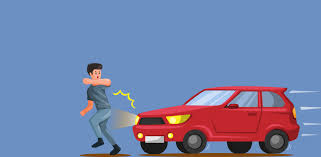Kerala HC Calls For Changes In Law To Penalise Road Rage
Kerala High Court Calls for Changes in Law to Penalise Road Rage
1. Background
Road rage refers to aggressive or violent behavior by drivers or riders on the road, often leading to dangerous situations.
It includes acts like verbal abuse, threats, reckless driving, or even physical assaults.
While traffic laws exist to regulate driving behavior, there is no specific law or stringent punishment solely targeting road rage incidents.
Courts and authorities have observed a rise in road rage cases, leading to accidents and loss of life.
2. Kerala High Court’s Observation
The Kerala High Court has expressed serious concern over increasing cases of road rage and their impact on public safety.
The court emphasized the need for stronger legal provisions and stringent penalties to deter such behavior.
The court noted that existing provisions under the Motor Vehicles Act, 1988, and Indian Penal Code (IPC) are inadequate to specifically address the menace of road rage.
3. Legal Provisions Currently Applicable
Section 279 IPC – Rash driving or riding on a public way.
Section 304A IPC – Causing death by negligence.
Section 506 IPC – Criminal intimidation.
Section 133 of Motor Vehicles Act – Power to remove dangerous vehicles.
Section 184 of Motor Vehicles Act – Dangerous driving.
However, these provisions deal with consequences but do not specifically categorize or penalize road rage separately.
4. Kerala HC’s Suggestions
The court urged the state legislature and central government to:
Enact specific legislation targeting road rage as a distinct offence.
Include stringent penalties (both fines and imprisonment) for acts constituting road rage.
Facilitate quick investigation and trial for such offences.
Suggested that awareness campaigns be strengthened to educate drivers about the consequences of road rage.
5. Reasoning Behind Stronger Laws
Road rage leads to loss of life, injury, and property damage.
Aggressive driving behavior increases road accidents and endangers public safety.
Legal deterrents can reduce such incidents by instilling fear of consequences.
Quick justice may help curb escalation and repeat offenses.
6. Relevant Case Law
a) Municipal Corporation of Delhi v. Subhagwanti, AIR 1966 SC 1753
The Supreme Court recognized the need for effective laws to maintain public order and safety.
Road rage incidents fall within the ambit of public safety and warrant firm legal action.
b) State of Haryana v. Bhajan Lal, 1992 Supp (1) SCC 335
Courts reiterated the principle that law must act to prevent crimes posing threat to society’s safety.
Stronger laws can act as preventive measures.
c) Kanchan Deva v. State of Rajasthan, (2007) 2 SCC 505
Highlighted the necessity for prompt investigation and trial in cases involving dangerous acts leading to harm.
Road rage cases need similar prompt judicial attention.
d) Supreme Court in Arvind Sureshbhai Gandhi v. State of Maharashtra (2019)
The Court condemned reckless and aggressive driving behavior.
Affirmed that such behavior could attract criminal liability under IPC and Motor Vehicles Act.
7. Challenges in Penalising Road Rage
Difficulty in proving intent and aggression in a court of law.
Lack of witnesses or clear evidence in many cases.
Inadequate police sensitization to treat road rage seriously.
Delay in trials reduces deterrent effect.
8. Conclusion
The Kerala High Court’s call reflects the urgent need to recognize road rage as a serious offence requiring separate penal provisions. Along with legislative reforms, improving enforcement mechanisms and public awareness can significantly curb aggressive driving and enhance road safety.




0 comments